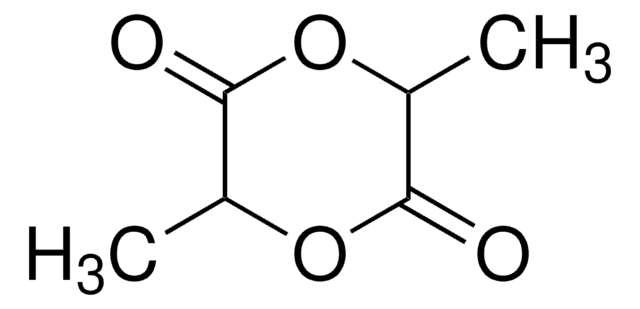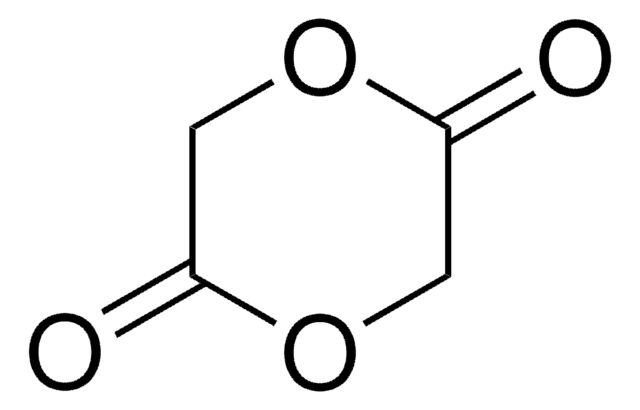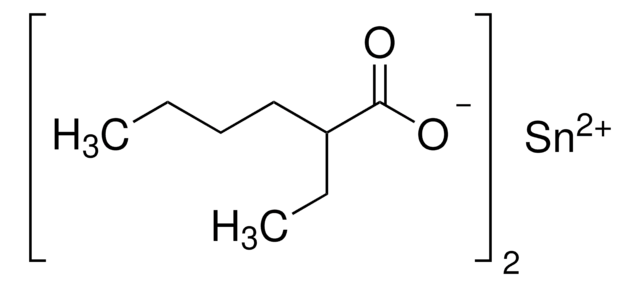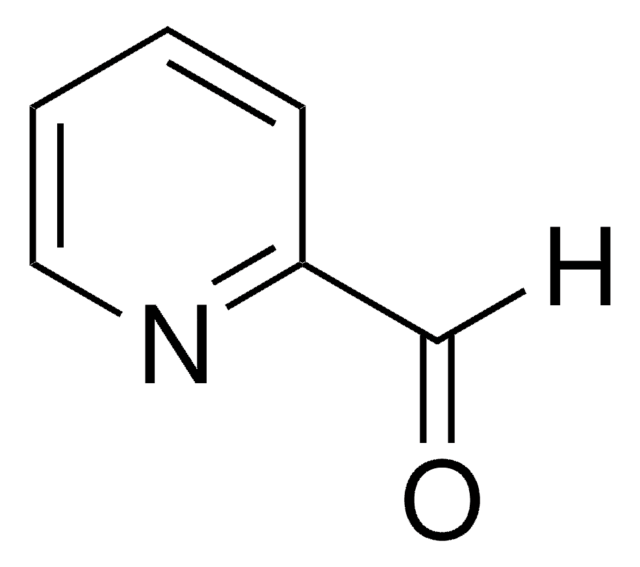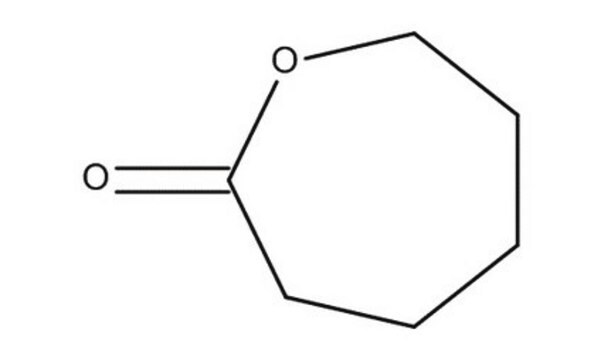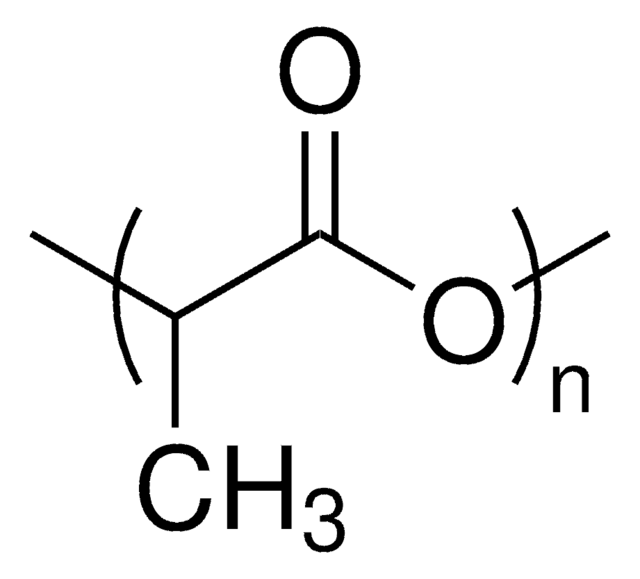Alle Fotos(2)
Wichtige Dokumente
367044
(3S)-cis-3,6-Dimethyl-1,4-dioxan-2,5-dion
98%
Synonym(e):
L-Lactid
Anmeldenzur Ansicht organisationsspezifischer und vertraglich vereinbarter Preise
Alle Fotos(2)
About This Item
Empirische Formel (Hill-System):
C6H8O4
CAS-Nummer:
Molekulargewicht:
144.13
EG-Nummer:
MDL-Nummer:
UNSPSC-Code:
12352005
PubChem Substanz-ID:
NACRES:
NA.22
Empfohlene Produkte
Qualitätsniveau
Assay
98%
Form
crystals
Optische Aktivität
[α]20/D −285°, c = 1 in toluene
mp (Schmelzpunkt)
92-94 °C (lit.)
Funktionelle Gruppe
ester
Lagertemp.
2-8°C
SMILES String
C[C@@H]1OC(=O)[C@H](C)OC1=O
InChI
1S/C6H8O4/c1-3-5(7)10-4(2)6(8)9-3/h3-4H,1-2H3/t3-,4-/m0/s1
InChIKey
JJTUDXZGHPGLLC-IMJSIDKUSA-N
Verwandte Kategorien
Anwendung
(3S)-cis-3,6-Dimethyl-1,4-dioxan-2,5-dion kann für die Synthese von optisch aktiven terpyridinhaltigen Poly(L-lactid)en, polydispersen Milchsäureoligomeren, bicyclischen und tricyclischen Lactidderivaten verwendet werden.
Wird bei der Synthese von biologisch abbaubaren Copolymeren verwendet.
Signalwort
Warning
H-Sätze
P-Sätze
Gefahreneinstufungen
Eye Irrit. 2
Lagerklassenschlüssel
13 - Non Combustible Solids
WGK
WGK 3
Flammpunkt (°F)
Not applicable
Flammpunkt (°C)
Not applicable
Persönliche Schutzausrüstung
dust mask type N95 (US), Eyeshields, Gloves
Hier finden Sie alle aktuellen Versionen:
Besitzen Sie dieses Produkt bereits?
In der Dokumentenbibliothek finden Sie die Dokumentation zu den Produkten, die Sie kürzlich erworben haben.
Kunden haben sich ebenfalls angesehen
Makromol. Chem., 194, 907-907 (1993)
Monodisperse enantiomeric lactic acid oligomers: preparation, characterization, and stereocomplex formation.
De Jong SJ, et al.
Macromolecules, 31(19), 6397-6402 (1998)
G Perego et al.
Biomaterials, 15(3), 189-193 (1994-02-01)
A copolymer of L-lactide and 6-caprolactone (50:50, w/w) was synthesized and characterized. The thermal behaviour of this material did not show any crystallinity for several months; only after more than 1 yr of aging at room temperature and, particularly, in
Jun Zhang et al.
Polymers, 11(5) (2019-05-15)
To improve the hemocompatibility of the biodegradable medical poly(ether-ester-urethane) (PEEU), containing uniform-size aliphatic hard segments that was prepared in our lab, a copolymer containing phosphorylcholine (PC) groups was blended with the PEEU. The PC-copolymer of poly(MPC-co-EHMA) (PMEH) was first obtained
Wenjun Liu et al.
Materials science & engineering. C, Materials for biological applications, 103, 109851-109851 (2019-07-28)
Favorable cytocompatibility and osteogenesis potential are critical for the development of a bone repair material. In this study, two types of surface-modified whiskers, grafted magnesia and chitin (g-MgO and g-CHN) whiskers, were synthesized and introduced into a poly(l-lactide) (PLLA) matrix
Unser Team von Wissenschaftlern verfügt über Erfahrung in allen Forschungsbereichen einschließlich Life Science, Materialwissenschaften, chemischer Synthese, Chromatographie, Analytik und vielen mehr..
Setzen Sie sich mit dem technischen Dienst in Verbindung.